¶ Summary
The Curtain Puzzle is an interactive, mechanical-electronic puzzle in which players must reveal a complete pattern by manually moving vertical panels. The system combines analog movement with digital position control. The puzzle can be solved by multiple people at the same time, as at least two people must move the panels to either side and one observes the pattern and gives directions.
¶ Video
- Live Demo: /curtain_puzzle_demo_live.mp4
- Digital Godot Prototype: /digital_prototpye_curtain.mkv
¶ Github & Google Drive
¶ Team
Project Team for the course Media Design 2 (The Studio) in the Summer Semester 2025 of Media Systems.
| Name | Student number | Contact information |
|---|---|---|
| Konrad S. | xxxx164 | yurirakhaw24@gmail.com |
| Nick H. | xxxx234 | --- |
| Sören G. | xxxx135 | --- |
Supervisor: Prof. Hebecker, Contact
For further contact information, please reach out to the Team of the GamesLab or Prof. Hebecker.
¶ Game Principle
- Five vertical panels each display part of the pattern. In the correct horizontal order, they reveal the complete pattern.
- Every panel is connected via a rope system. On either side, the ropes can be pulled in order to move the panels left and right.
- Above the panels, ZigBee sensors are installed at the right position, which trigger a signal via ZigBee or Bluetooth once the panel is below the sensor. With the help of a ZigBee hub, the signals can be captured and processed. Once all the panels are arranged in the right order, the hub sends a notifcation, that the puzzle has been completed.
- The order of the extra symbols (rectangle, triangle, circle) from the project Flux It Out! provide hints on how to arrange the panels.
- After completion the panels contain the order of the code for the Radio-Puzzle.
¶ Presentation
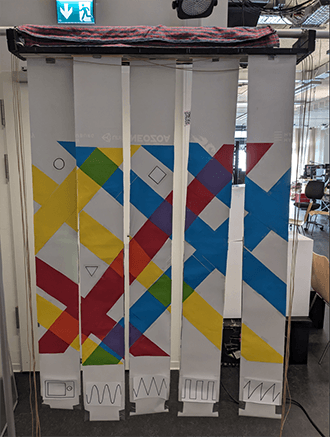
|

|
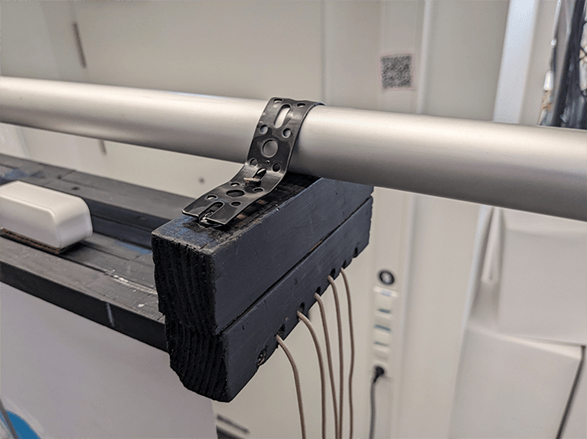
|
¶ Target Audience
- Children (6 -12 years) and their families.
- Exhibition visitors, who would like to test their communication and coordination skills.
¶ Unique Selling Point
- Hand-On training of motoric coordination and social communication especially for children.
- Learning of pattern recognition and transferring of patterns to different applications.
- Analog and without the usage of media.
¶ Inspiration / Idea
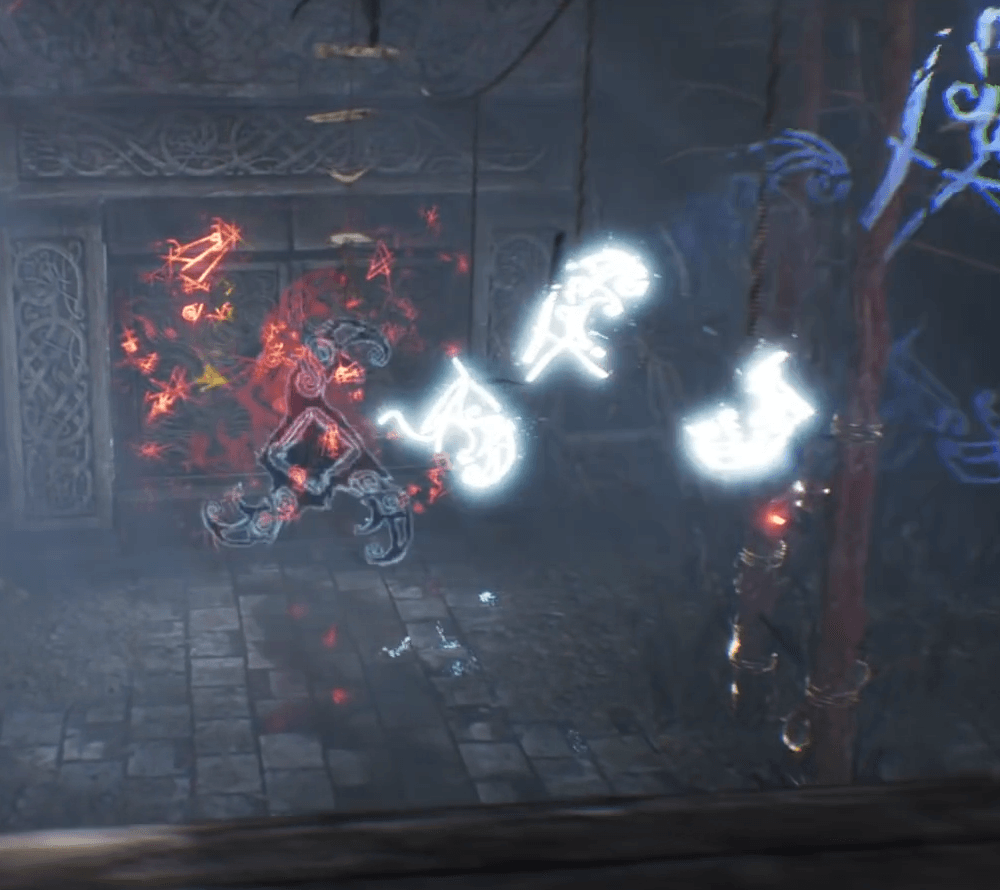
|
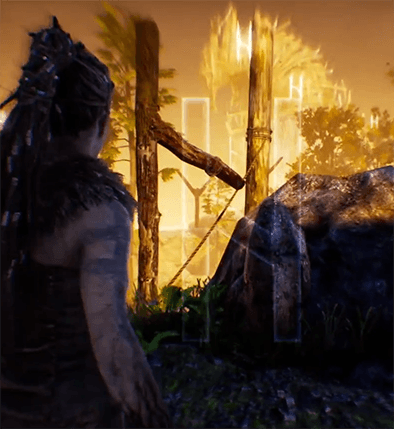
|
|
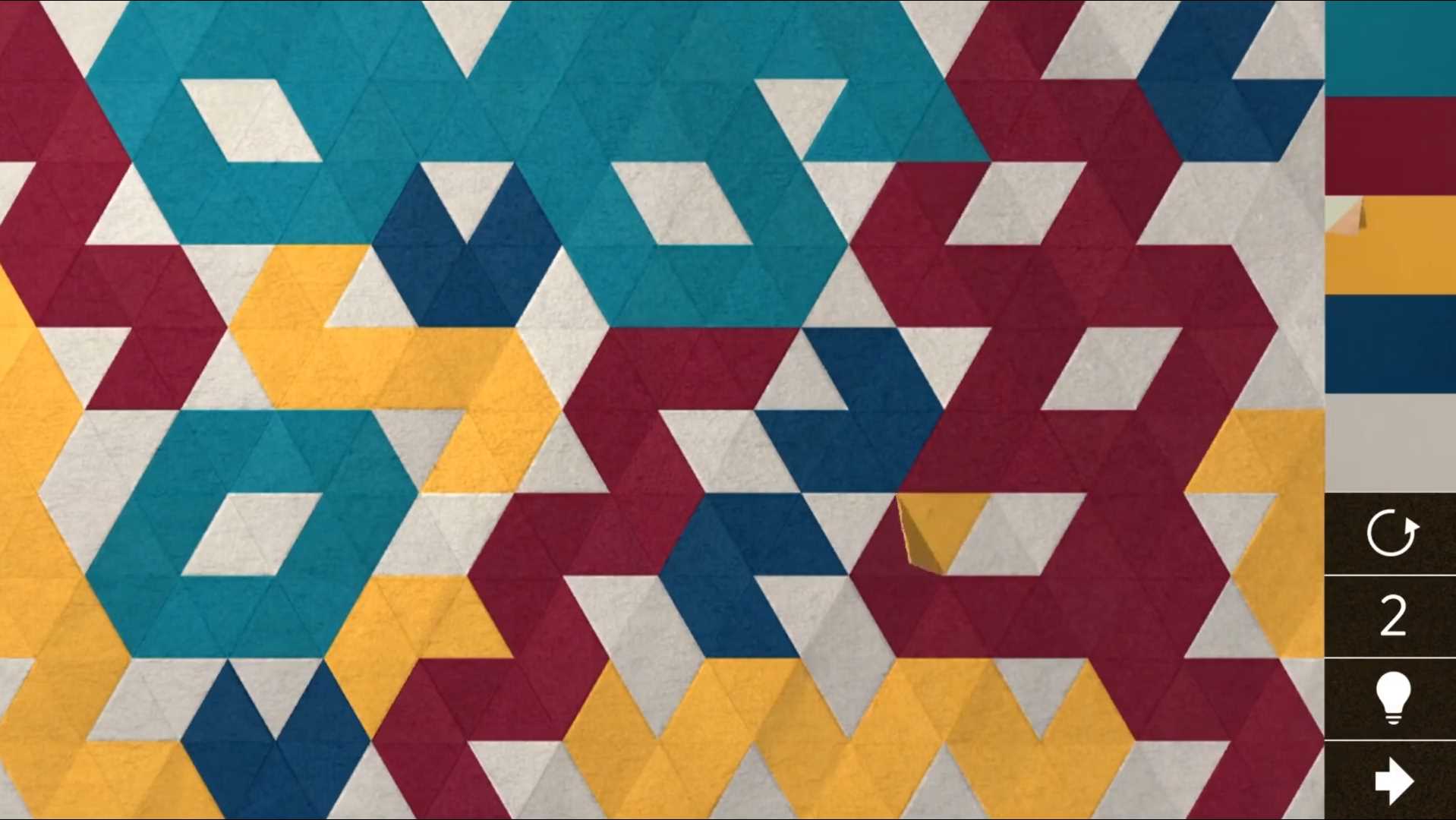
|
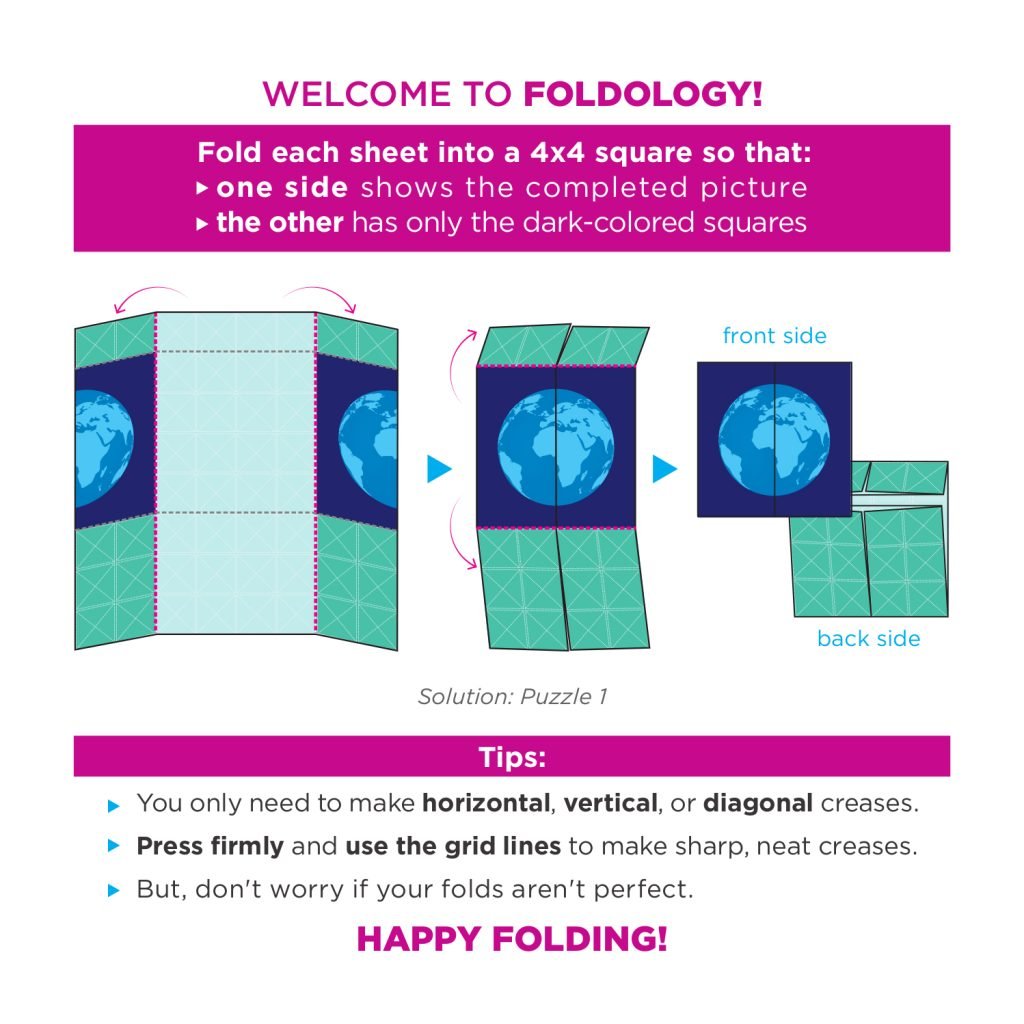
|
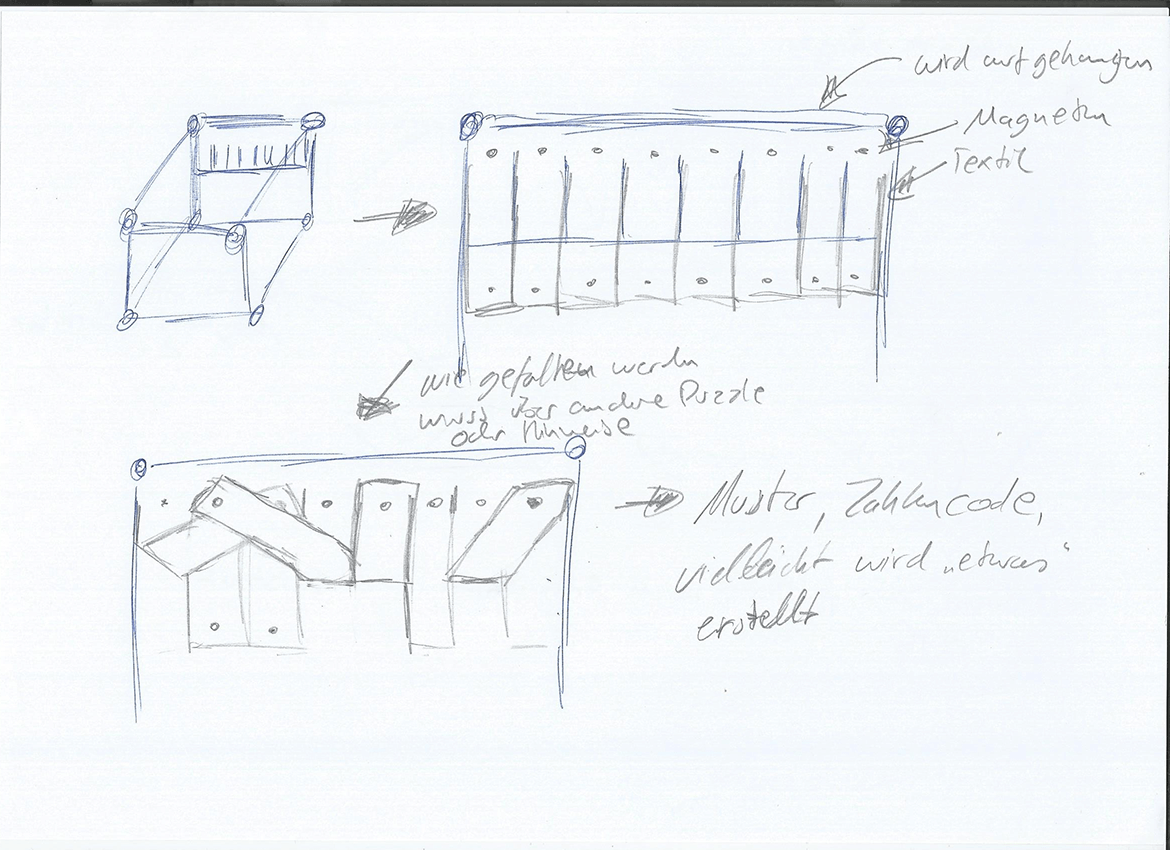
|
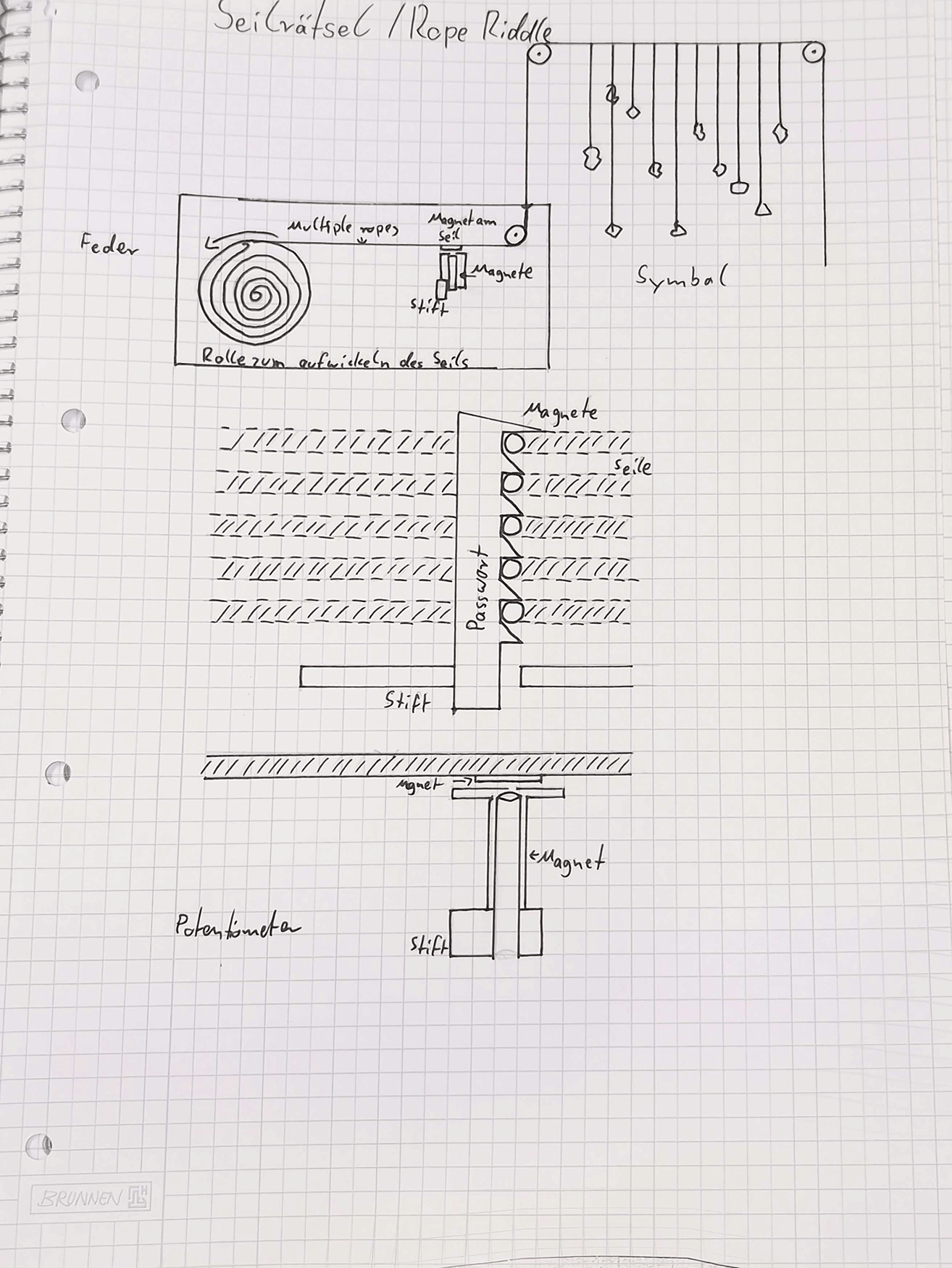
|
- First concept: lock principle with ropes and potentionmeter. Once the panels are arranged in the right order, the pin with the code/password on it can be pulled out.
- Combination of origami with mechanical arrangement
- Inspirations for first origami/folding puzzle ideas: KAMI 2 (inspired the design and pattern recognition), Foldology (inspired the folding based mechanics and pattern recognition), Noren (traditional japanese fabric curtain, inspired the curtain/textile design)
→ Reduced movable parts in order to simplify the puzzle
¶ Development
¶ Workflow
Subsequent to developing first ideas, the next step consisted of researching for materials and what implementation would be possible in the scope of this course. After careful consideration the group decided to acquire the ZigBee sensors and hub in order to mark the puzzle as solved and give feedback to the player.
To visualize the physical prototype, a digital prototype was created first in the game engine Godot. This allowed the team to consider all the factors needed in order for the physical prototype to work. It also gave the opportunity to present the progress to the course and let people try the patterns to see how hard they would be to solve. This consideration was necessary as the target audience mainly consists of children who are still learning.
After developing a functioning digital prototype and the materials, which had been purchased in the meantime, had arrived, the work on the physical prototype started. The prototype required more labor than first anticipated and the self-built tracks for the panels turned out to be hard to implement. In the end it held up sturdy despite setbacks. Within the developement process there were a few decision made to exclude certain ideas or materials due to cost or missing time.
The result is a functioning, playful and cooperative prototype of curtain-like panels being moved by ropes in order to create a pattern, which points to the next puzzle.
¶ Pattern creation
Different patterns were based on:
- Inspiration from stock footage (Abstract mosaic background, Geometry minimalistic pattern)
- Color mixing
- Symbols (Mythologies, Cultures), (roman) Numbers
- Feedback from testers
¶ Media and Visualization
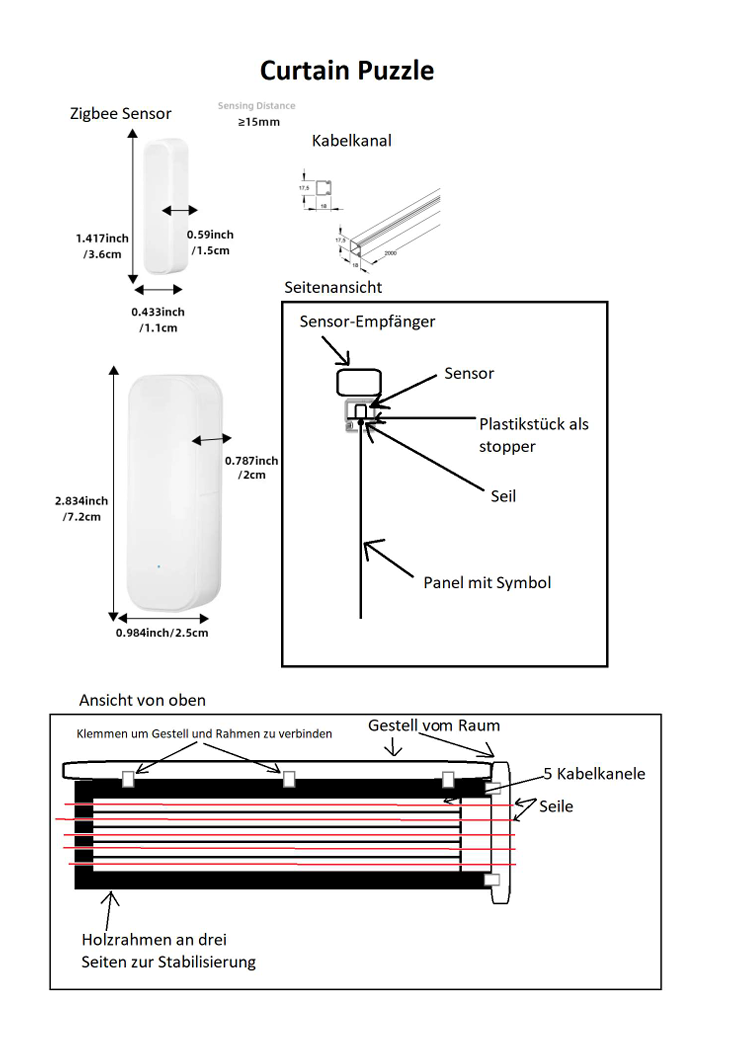
|

|
¶ Technology
- Godot Game Engine
- ZigBee Sensor and Hub
¶ Materials and Labor Cost
¶ Materials
| Material | Description | Cost (€) |
|---|---|---|
| Cable channels | Used for directing the panels and rope | 4 |
| Wooden poles (round and rectangular) | Used for securing the panels to the rope and the frame of the construct (rectangle) | 10 |
| ZigBee Sensors and Hub | Used for recognition of panel positions and commucation on solving the puzzle | 65 |
| Paracord | Used for securing and moving the panels | 10 |
| Panel (PVC) | Used for displaying the patterns | 35 |
| Extra materials | Materials like tape and glue used for securing the construction | 30 |
¶ Project Cost
| Cost item | Quantity | Price per unit | Sum |
|---|---|---|---|
| Materials | — | — | 154 € |
| Labor Cost | 240 h | 25 €/h | 6.000 € |
| Supervision | 20 h | 50 €/h | 1.000 € |
| Rent | 2 weeks | 250 €/week | 500 € |
| Total | 7654 € |
¶ Lessons Learned
- Physical creation is difficult: Buy prebuilt parts, self-built creation are worse most of the time.
- Digital Prototypes are helpful: Visualize your product before you spent money on it. Allows presenting to peers and improvements before production of physical prototype.
- Project Scope: Start small, expand later.
- Speak with peers, familiarize yourself with the space available: Talk to peers about their projects and their planned implementation in the space in order to adjust your project size.
¶ Outlook
- Replace self-built parts with prebuilt or 3D-printed parts for less friction and smoother operation. For example, the tracks in which the panels move – use regular curtain systems.
- Implement visual or auditory feedback when panels reach the correct position.
- Connect with Radio-Puzzle in order to activate it after completing the puzzle.
- When implementing a central hub for the escape room, send a completion signal so it can be logged.
¶ Sources
¶ Image Sources
- (1) State of Play Games. (2017). KAMI 2. State of Play Games. Screenshot retrieved August 21, 2025 from the Youtube video “KAMI 2 - Steam and Nintendo Switch Trailer”, Noodlecake
- (2) Foldology Origami Puzzles. (n.d.). Foldology Origami Puzzles – Brain teaser game with 100 challenges. Retrieved August 21, 2025, from https://foldologypuzzle.com/wp-content/uploads/2019/10/InstructionsOriginal-1024x1024.jpg
¶ Other Sources
- State of Play Games. (2017). KAMI 2. State of Play Games. https://www.stateofplaygames.com/kami2
- Foldology Origami Puzzles. (n.d.). Foldology Origami Puzzles – Brain teaser game with 100 challenges. Retrieved August 21, 2025, from https://foldologypuzzle.com/
- Wikipedia contributors. (2025, May 4). Noren. In Wikipedia, The Free Encyclopedia. Retrieved 20:04, August 21, 2025, from https://en.wikipedia.org/w/index.php?title=Noren&oldid=1288813315
- Ancala Nusantara. (n.d.). Abstract mosaic background. Flat abstract geometric shape [Vector art]. Vecteezy. Retrieved August 21, 2025, from https://www.vecteezy.com/vector-art/14497128-abstract-mosaic-background-flat-abstract-geometric-shape
- Udomdech Jaroenthanaporn. (n.d). Geometry minimalistic pattern. Abstract vector pattern for web banner, business presentation, branding, fabric, textile [Vector art]. Vecteezy. Retrieved August 21, 2025, from https://www.vecteezy.com/vector-art/23329907-geometry-minimalistic-pattern-abstract-vector-pattern-for-web-banner-business-presentation-branding-fabric-textile